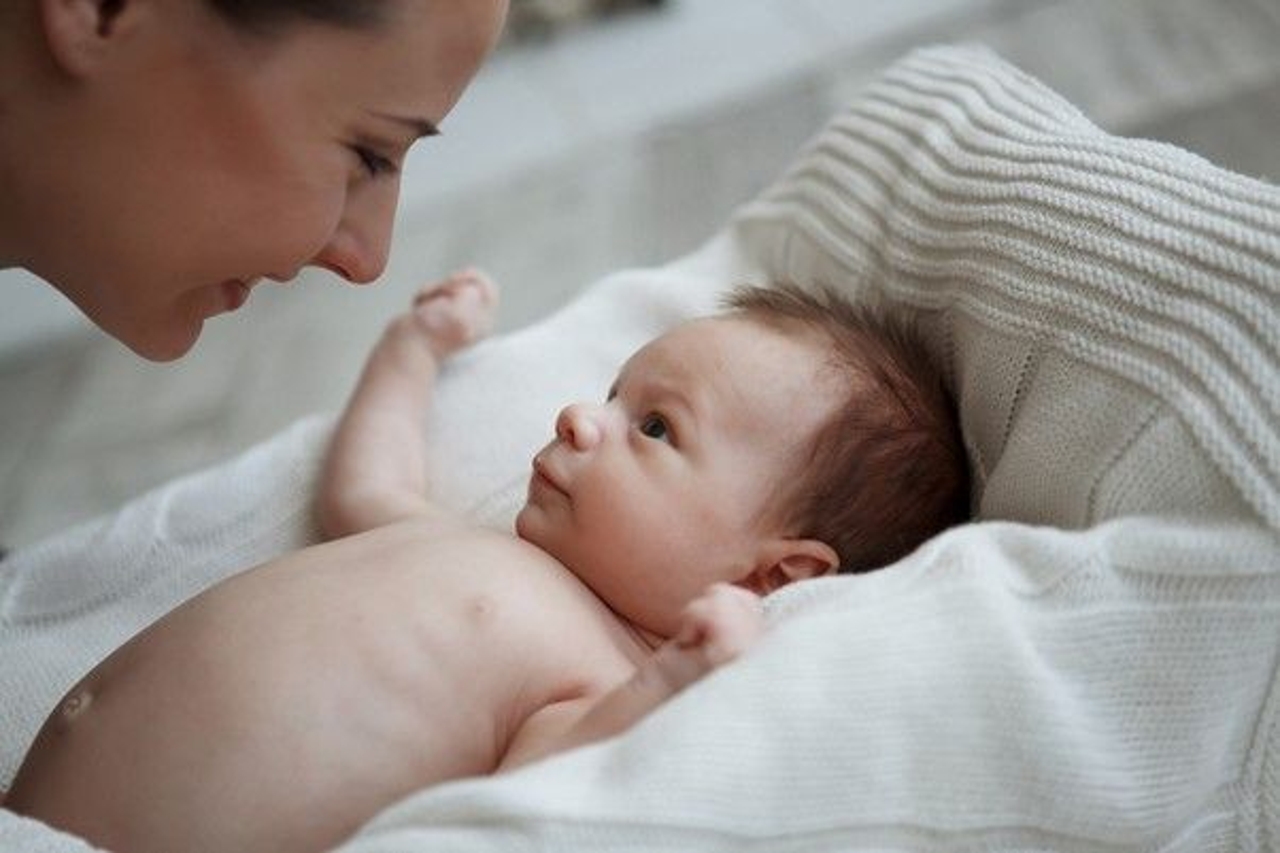Babies are born short-sighted. They can see, but vision is fuzzy and only reaches about 25-30cm from their face. It takes months for your little one's eye muscles to strengthen up, and for the brain to learn how to make sense of all the new visual information. The first things that your little one will be able to recognise are bright colours and faces.
Sight development through the early months
All children develop at different rates. The following is a loose guide to milestones. If your baby doesn't stick to this precise schedule, don't worry. Consult your doctor if your child seems to be developing particularly slowly, or you have any other cause for concern.
Two months
Two-month-old babies are learning how to focus on objects. Their eyes might begin following objects around this age. You might notice them reacting to your face, as they will start to recognise you.
Three months
Focus is often extending to further distances now. Eye muscles are strengthening, and your baby might be able to follow an object that is further away, for an extended period.
Four months
Hand-eye coordination might start to kick-in now. Your baby is also developing motor skills, so as these skills grow alongside their vision, tots begin reaching for objects. Lighter or pastel colours become more noticeable around this time.
Six months
Time for depth-perception. 6-month-olds will have some level of understanding distance as they learn to process images in three dimensions.
Tracking and Helping your Baby's Visual Development
For the first few months of a baby's life, their eyes may seem to be wandering or going cross-eyed. This is normal while eye-muscles develop and your baby practises focus. If your little one's eyes seem to be wandering or going cross-eyed a lot of the time or for longer than 3-4 months, talk to your doctor.
Having your little one's eyes checked early and regularly is a good idea. Some vision impairments aren't apparent from the outside. Catching potential issues early on can prevent them from worsening.
A positive sign of healthy visual development includes your baby wanting to make eye contact. Eye contact is important for bonding with your baby, so get as much gazing in as you can! Recognising faces is also a good sign.
Early on, try reading your little one picture books. Choose images in bright colours or high-contrast black-and-white. Hold the pages close enough to your baby's face so that they have a chance to process it – about 30cm will do.
Games that encourage your baby to focus their eyes or move their eye muscles can be very beneficial to vision development. Try peek-a-boo games with brightly coloured toys, or use a bright cloth to hide and reveal your own face. Moving a toy up-and-down or side-to-side, or rolling a ball back and forth can help your baby practise following objects. Hanging a mobile safely above their cot is great hands-off visual stimulation.
Noticing your baby seeing more things will be exciting. More colours, more people, more objects. They'll start to have reactions to stimulus, and you'll soon be learning a lot about their personality.
